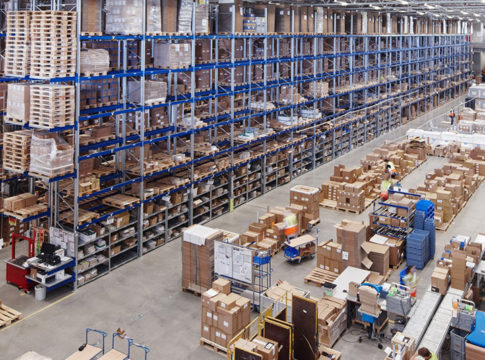Symphony RetailAI, the leading global provider of integrated AI-enabled marketing, merchandising and supply chain solutions for FMCG retailers and manufacturers, today announced findings from its Category Planning & Assortment Optimization Executive Survey, conducted in partnership with Incisiv. In the survey, retail executives demonstrated a short-term shift in priorities to deal with the COVID-19 pandemic, with 95% citing inventory optimization as their top priority as they enter a new fiscal year.
The study reveals a maturity gap between retailers’ intentions and capabilities for category planning and assortment optimization. The survey also found precisely how retailers plan to enhance their merchandising efforts to support the ‘new normal,’ with a large majority declaring plans to invest in integrated and cloud-based category planning technologies. The research emphasizes that achieving growth objectives will require an upgraded capability set for both retailers and CPGs.
New priorities, and a new store model, for delivering on omnichannel merchandising.
Strategic priorities have shifted in light of COVID-19 disruption, and retailers’ short-term priorities have evolved accordingly. Today, 95% of respondents claim improving on-shelf availability and reducing out-of-stocks as their top priorities. Last year at this time, the top priority, as indicated by 67% of retailers, was assortment optimization to meet consumer demand. This shift indicates that near-term operational challenges will again give way to assortment optimization, especially as countries emerge from the pandemic and consumer preferences change faster and more dynamically than ever before.
Category management and assortment objectives also include physical transformations to the retail store. The survey found that the majority of retailers (77%) are looking to dedicate more store space to support curbside pickup and click-and-collect services. This will impact store layouts and physical shelf space devoted to specific categories, requiring retailers to effectively rationalize their assortments without disappointing shoppers.
Insufficient data, technology and analytics capabilities contribute to maturity gap.
When asked to rate the performance of their category management technologies, the majority of retailers surveyed (79%) said their current solutions were either average or poor. Furthermore, 58% say they have no integration, or only partial integration, of their category management systems, and 78% of those surveyed use either basic analytics in category management processes or no analytics at all.
But change is on the horizon. An analysis of retailers’ forward-looking plans points to a desire to better insulate their capabilities from future disruptions, with 55% of retail executives planning to integrate category planning and supply chain data in the next 12 to 24 months. Grocers also overwhelmingly indicated that they would like to perform twice as many category resets annually.
“Grocers with greater analytics maturity and deeper integration lead the industry in terms of performance – these players see twice the basket size of less mature grocers, and 2.6 times share of wallet,” said Gaurav Pant, Chief Insights Officer, Incisiv. “Our study with Symphony RetailAI shines a light on existing merchandising roadblocks, and points to the benefits of upgrading technology to better execute on 2021 objectives.”
“COVID flipped the script for retailers in 2020, and that can be seen in the shifting merchandising priorities uncovered in this latest study,” said Chris Koziol, CEO, Symphony RetailAI. “COVID has shown us that retailers must be prepared for any disruption to supply and demand. Laying a scalable foundation based on integrated data and actionable insights is key to meeting these challenges.”
Accurate, timely data is critical to improving category planning and merchandising decisions, as indicated by 81% of retailer respondents in the study. In order to optimize both assortments and inventory in a streamlined and agile way, retailers must leverage AI-powered insights, analytics, and recommendations to make optimal merchandising decisions.





